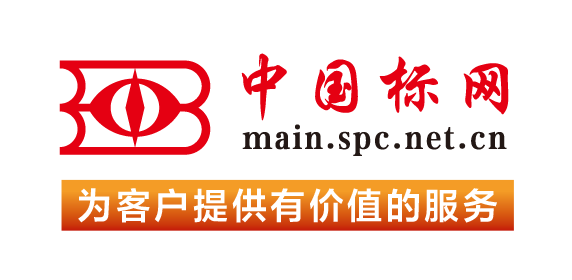【国外标准】 Standard Test Method for Peel Strength of Metal Electroplated Plastics
本网站 发布时间:
2024-02-28
开通会员免费在线看70000余条国内标准,赠送文本下载次数,单本最低仅合13.3元!还可享标准出版进度查询、定制跟踪推送、标准查新等超多特权!
查看详情>>
适用范围:
4.1 The force required to separate a metallic coating from its plastic substrate is determined by the interaction of several factors: the generic type and quality of the plastic molding compound, the molding process, the process used to prepare the substrate for electroplating, and the thickness and mechanical properties of the metallic coating. By holding all others constant, the effect on the peel strength by a change in any one of the above listed factors may be noted. Routine use of the test in a production operation can detect changes in any of the above listed factors.4.2 The peel test values do not directly correlate to the adhesion of metallic coatings on the actual product.4.3 When the peel test is used to monitor the coating process, a large number of plaques should be molded at one time from a same batch of molding compound used in the production moldings to minimize the effects on the measurements of variations in the plastic and the molding process.1.1 This test method gives two procedures for measuring the force required to peel a metallic coating from a plastic substrate.2 One procedure (Procedure A) utilizes a universal testing machine and yields reproducible measurements that can be used in research and development, in quality control and product acceptance, in the description of material and process characteristics, and in communications. The other procedure (Procedure B) utilizes an indicating force instrument that is less accurate and that is sensitive to operator technique. It is suitable for process control use.1.2 The tests are performed on standard molded plaques. This method does not cover the testing of production electroplated parts.1.3 The tests do not necessarily measure the adhesion of a metallic coating to a plastic substrate because in properly prepared test specimens, separation usually occurs in the plastic just beneath the coating-substrate interface rather than at the interface. It does, however, reflect the degree that the process is controlled.1.4 This standard does not purport to address all of the safety concerns, if any, associated with its use. It is the responsibility of the user of this standard to establish appropriate safety, health, and environmental practices and determine the applicability of regulatory limitations prior to use.1.5 This international standard was developed in accordance with internationally recognized principles on standardization established in the Decision on Principles for the Development of International Standards, Guides and Recommendations issued by the World Trade Organization Technical Barriers to Trade (TBT) Committee.
标准号:
ASTM B533-85(2019)
标准名称:
Standard Test Method for Peel Strength of Metal Electroplated Plastics
英文名称:
Standard Test Method for Peel Strength of Metal Electroplated Plastics标准状态:
Active-
发布日期:
-
实施日期:
出版语种:
- 其它标准
- 上一篇: ASTM B516-18 Standard Specification for Welded Nickel-Chromium-Aluminum Alloy (UNS N06699) and Nickel-Chromium-Iron Alloy (UNS N06600, UNS N06601, UNS N06603, UNS N06025, UNS N06045, UNS N06690, and UNS N06693) Tubes
- 下一篇: ASTM B541-01(2018) Standard Specification for Gold Electrical Contact Alloy
- 推荐标准
- ASTM 51401-21 Standard Practice for Use of a Dichromate Dosimetry System
- ASTM 51956-21 Standard Practice for Use of a Thermoluminescence-Dosimetry System (TLD System) for Radiation Processing
- ASTM A1010/A1010M-24 Standard Specification for Higher-Strength Martensitic Stainless Steel Plate, Sheet, and Strip
- ASTM A1016/A1016M-24 Standard Specification for General Requirements for Ferritic Alloy Steel, Austenitic Alloy Steel, and Stainless Steel Tubes
- ASTM A105/A105M-24 Standard Specification for Carbon Steel Forgings for Piping Applications
- ASTM A1064/A1064M-24 Standard Specification for Carbon-Steel Wire and Welded Wire Reinforcement, Plain and Deformed, for Concrete
- ASTM A108-24 Standard Specification for Steel Bar, Carbon and Alloy, Cold-Finished
- ASTM A1080/A1080M-24 Standard Practice for Hot Isostatic Pressing of Steel, Stainless Steel, and Related Alloy Castings
- ASTM A1090/A1090M-19(2024) Standard Specification for Forged Rings and Hollows for Use as Base Plates in Power Transmission Structures
- ASTM A1115/A1115M-24 Standard Practice for Construction of Mechanically Stabilized Earth Walls with Inextensible Soil Reinforcement
- ASTM A1128-24 Standard Specification for Stainless Steel Shielded, Rubber Gasketed Couplings Having an Integral Restraint Feature for Joining Hubless Cast Iron Soil Pipes and Fittings Where External Restraint Is Required
- ASTM A179/A179M-24 Standard Specification for Seamless Cold-Drawn Low-Carbon Steel Heat-Exchanger and Condenser Tubes
- ASTM A234/A234M-24 Standard Specification for Piping Fittings of Wrought Carbon Steel and Alloy Steel for Moderate and High Temperature Service
- ASTM A242/A242M-24 Standard Specification for High-Strength Low-Alloy Structural Steel
- ASTM A249/A249M-24a Standard Specification for Welded Austenitic Steel Boiler, Superheater, Heat-Exchanger, and Condenser Tubes
 我的标准
我的标准 购物车
购物车 400-168-0010
400-168-0010














